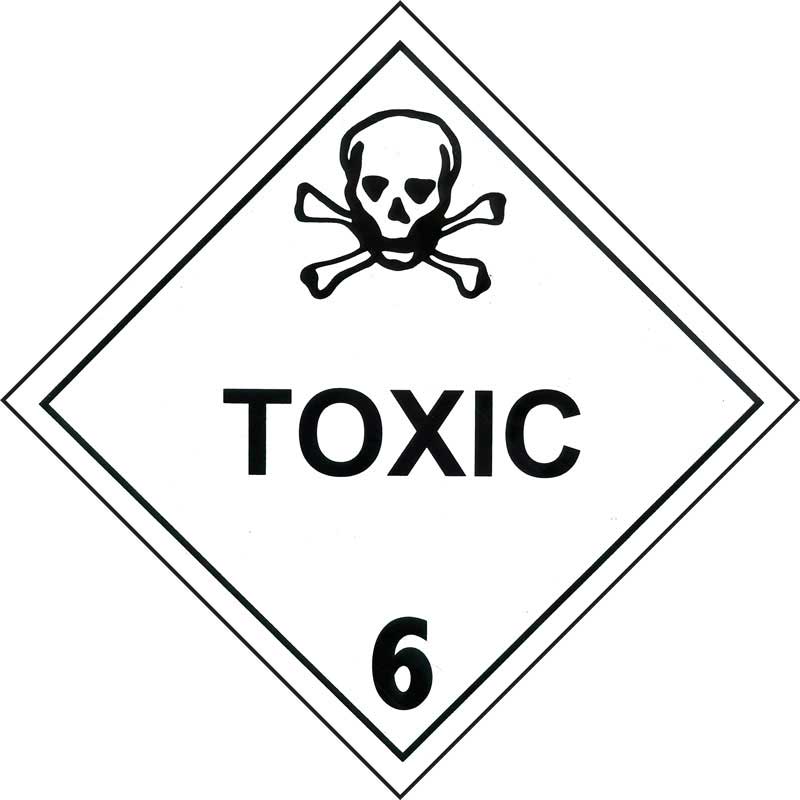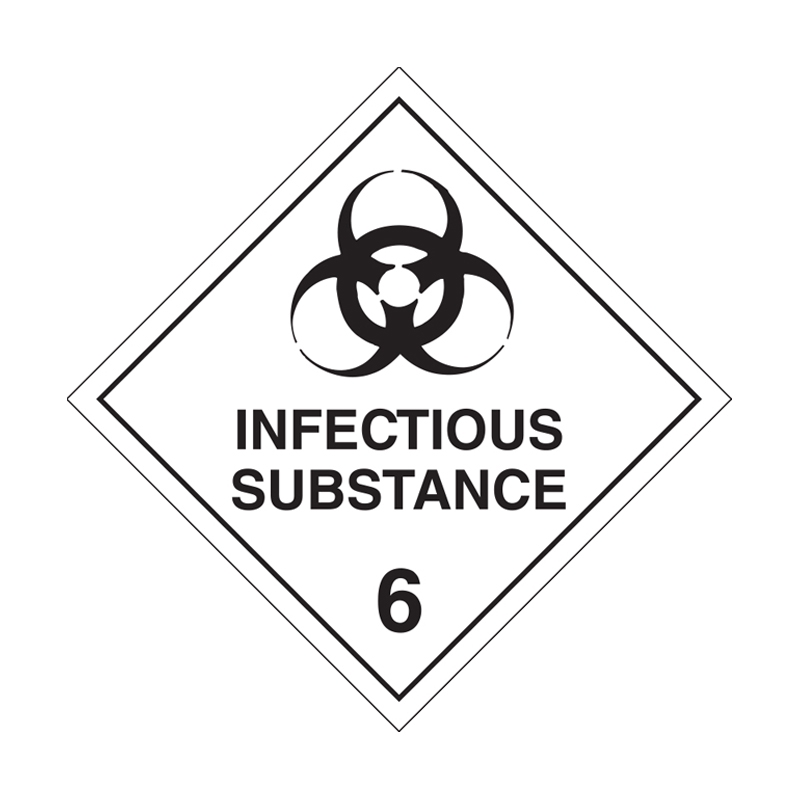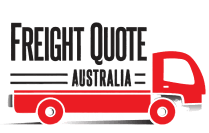Transporting toxic and infectious substances requires careful attention and strict adherence to regulations to ensure the safety of everyone involved. In Australia, the proper handling and transportation of Class 6 dangerous goods is governed by regulatory bodies such as the ADG. Let’s look at what Class 6 dangerous goods are, how to comply with regulations, and safety measures necessary for the safe transportation of these substances.
What are Class 6 Dangerous Goods?
6.1 Toxic Substances
The ADG Code states that toxic substances are ‘substances that are liable to either cause death, serious injury or harm to human health from skin contact, ingestion or inhalation.’ In addition to being deadly for humans, contamination can have long-lasting effects on ecosystems, harming plants, animals, and other organisms that depend on a clean and healthy environment.
Here are some examples of toxic substances:
- Cyanides are highly poisonous compounds that are found in various forms. Even small amounts can have severe effects, including disrupting oxygen flow and causing organ failure or death.
- Arsenic compounds that contain a naturally occurring element can be toxic. Prolonged exposure leads to health issues like skin lesions, cardiovascular problems, and an increased cancer risk.
- Lead acetate is a toxic substance found in hair dyes and cosmetics. It can accumulate in the body, causing neurological disorders, developmental issues in children, and damage to vital organs.
Some toxic substances may require specific temperature control during transportation. This could involve refrigeration or insulation to keep the substances in the required temperature range. The correct temperature will help prevent degradation or the release of harmful fumes.

6.2 Infectious Substances
An infectious substance is a biological material that can cause infection or disease when introduced into a susceptible living thing, such as a human. Vaccines and pathology specimens are two specific types of infectious substances.
Vaccines often contain weakened or inactivated forms of microorganisms. Proper temperature control is crucial during the transportation of vaccines to ensure they are still usable when they reach their destination. Many vaccines require refrigeration or freezing temperatures which calls for specialised refrigerated vehicles or cold chain logistics systems.
Pathology specimens are samples of body fluids, tissues, or swabs taken from patients for diagnostic purposes. While pathology specimens typically won’t require specific temperature control like vaccines, ensuring proper handling and protection against contamination is extremely important.

Regulations for Transporting Class 6 Dangerous Goods
Transporting Class 6 dangerous goods in Australia requires compliance with various regulatory frameworks. This helps ensure the safety of both the transport personnel and general public. The primary regulatory body responsible for overseeing the transportation of dangerous goods in Australia is the Australian Dangerous Goods Code (ADG Code). The ADG Code outlines the classification, packaging, labelling, and transport requirements for dangerous goods, also including Class 6 substances. A document that provides helpful information on transporting toxic and infectious substances is the Requirements for the Packaging and Transport of Pathology Specimens and Associated Materials document. These requirements are designed to ensure the protection of individuals handling the specimens, and to maintain the integrity and quality of the specimens during transportation.
The Chain of Responsibility law, under the Heavy Vehicle National Law (HVNL), is also an important legislation that states that all parties involved in the supply chain, regardless of their location or role, will be accountable for any safety violations that occur. The National Heavy Vehicle Regulator (NHVR) regulates heavy vehicles which have over 4.5 tonnes of GVM to ensure safe transport.
Main Requirements for Transporting Class 6 Dangerous Goods
Below are some of the main requirements the ADG Code covers:
Packaging and Labelling
When transporting toxic and infectious substances, it’s essential to use approved containers that meet specific standards to prevent leaks, spills, or exposure. The packaging must also be clearly labelled with appropriate hazard symbols and warning signs to indicate the nature of the contents and the associated risks.
Transportation Methods
The ADG Code provides guidelines for selecting the appropriate transportation methods for Class 6 dangerous goods. Different substances may have specific transportation requirements based on their nature and risks. Transport companies should choose vehicles and containers that are compatible with the goods being transported. This ensures secure containment throughout the journey and helps prevent potential accidents or contamination.
Two examples of transport vehicles and containers for these dangerous goods include dedicated hazardous materials transport vehicles and intermediate bulk containers (IBCs). Hazardous materials transport vehicles are designed and equipped specifically for transporting hazardous materials. They typically have built-in safety features, such as spill containment systems, ventilation controls, and fire suppression systems. Hazardous materials transport vehicles may include tanker trucks for liquids, enclosed trailers for solid materials, or specialised vehicles for biological samples.
Intermediate bulk containers (IBCs) are commonly used for the transport of hazardous substances. They are rigid containers, often made of plastic or metal, with a capacity ranging from a few hundred litres to a few thousand litres. IBCs are designed to withstand the rigors of transportation, including stacking, lifting, and securing during transit. Please conduct research before transporting dangerous goods in IBCs as they may not be suitable in certain situations and for certain substances.
Documentation and Training
Accurate documentation is a vital aspect of transporting toxic and infectious substances. Transporters must maintain detailed records, including consignment notes, safety data sheets, and emergency response information. These documents provide essential information to emergency responders and guide them in handling any incidents or accidents effectively.
Furthermore, it’s essential for transport personnel to undergo proper training in the handling and transportation of Class 6 dangerous goods. Training programs educate workers on the specific risks associated with toxic and infectious substances, as well as the appropriate safety measures to prevent accidents and mitigate hazards.
Safety Measures and Emergency Response
Transporting Class 6 dangerous goods requires strict safety measures to minimise risks and ensure quick and effective emergency response. Freight companies and businesses should have comprehensive emergency response plans in place, explaining procedures that should be followed in emergencies such as spills and leaks. The response plan should cover what personal protective equipment (PPE) workers should use, explain containment measures, and list emergency contacts.

Transporting toxic and infectious substances requires strict compliance with regulations and a thorough understanding of the associated risks. Adhering to proper packaging, labelling, transportation methods, documentation, training, and emergency response protocols is imperative.
Need to Transport Class 6 Dangerous Goods in Australia?
There are strict limitations and guidelines to what, and how much of a dangerous material can be transported by a carrier, so be sure to declare the Dangerous Goods when requesting a quote online. Freight Quote Australia is able to arrange transport of most Dangerous Goods, however, we will require the UN number, Class, Packing Group, and Weight of the goods in order to quote and book your freight.
This information is general in nature and we accept no responsibility for consequences arising from the use or reliance on this article. If you need assistance transporting toxic or infectious substances, please feel free to submit a Quote Request.

